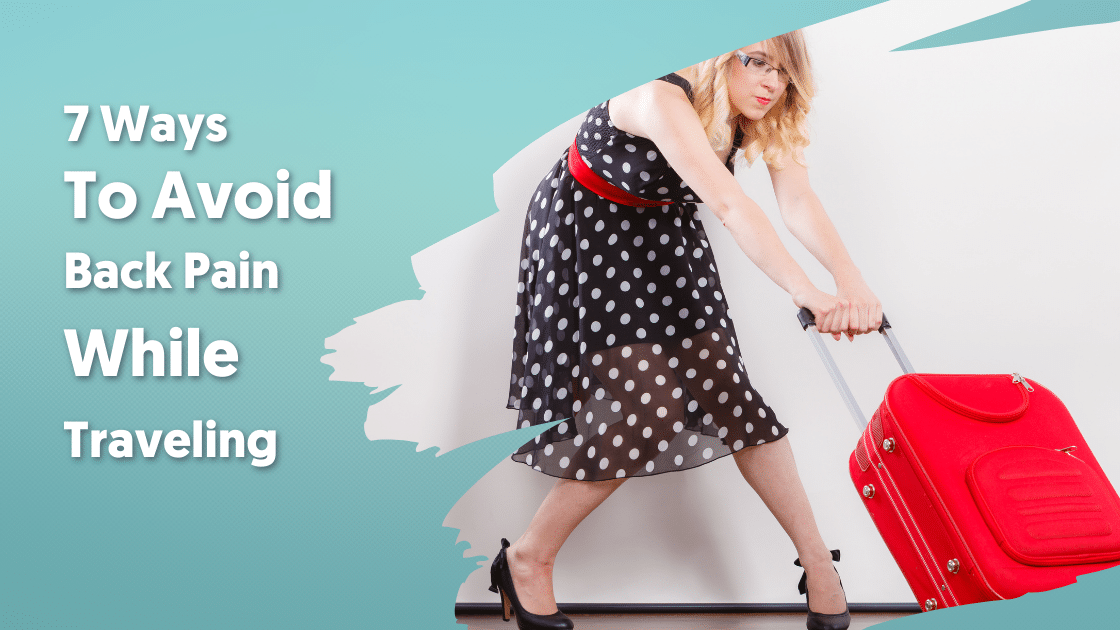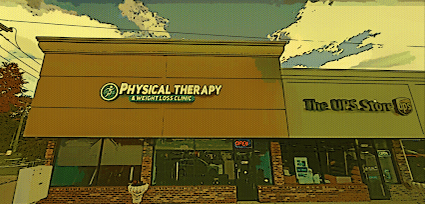It’s no secret that it can be extremely difficult to manage back pain while traveling. Sitting in one position for extended periods of time stiffens the back muscles, which can put stress on the spine. Many of us are planning trips to visit family and friends that we haven’t seen for a while. Below are some helpful tips on how to avoid back pain while traveling so you can stay pain-free!

Lift Luggage In Stages.
When you’re lifting your luggage, make sure to take it slow. More importantly, break the action down into smaller steps. For example, when you’re lifting a bag into the overhead bin, rest it on the arm of your seat. Then, move it to the top of the seat backing, and then up into the bin. These should be done in separate motions to avoid injury.
Use A Backpack.
When it comes to backpacks, make sure you’re using both straps instead of slinging the bag over one shoulder. Even the lightest bag can become an issue after repeated wear. A good rule of thumb is the lighter the bag, the better. Avoid carrying anything that is greater than 15% of your body weight. You’ll want to carry even less if you already have back issues. Backpacks are also great because they allow your hands to be free, which means you’re able to hold onto handrails on escalators, stairs, the boarding ramp, and more.
Recline.
Typically, sitting in a reclined position is the least stressful on the back. This is especially true for people with many different back conditions. If this is the case for you, remember to check that your seat is able to recline when making your reservation and choosing your seat assignment. Some seats, like in the exit rows or at the back of the plane, don’t allow you to recline.
Stretch It Out.
As previously mentioned, sitting for a long period of time can cause tension and stiffness. You’re most likely able to feel this in your hamstrings (the muscles in the back of your thighs) and your hip flexor muscles. This stiffness puts more stress on your lower back, as a result.
Fix The Seat.
Take a good look at the shape of your seat. You’ll want some really good lumbar support to avoid aches and pains. Start by placing a small rolled-up towel or blanket between your back and the seat. You can even use a lumbar pillow if you prefer. Make sure the pillow is snug near the small of your back, where the natural curve is at. Most of the time, public seats are worn out and don’t have great support. As a result, you’re forced to sit lower in an unnatural, stressful position. If the bottom of your seat sags, put a folded blanket down for some extra support.
Use Your Feet.
You always want to have your feet touching the ground whenever you’re sitting. Regardless of the type of chair you’re using or if you’re sitting in a plane, train, or automobile. Your knees should be at a 90° angle while seated. If that’s not the case, you may have to scoot forward towards the edge of the seat. Alternatively, you may need to put something on the ground to act as a firm footrest. For instance, grab a spare phonebook (there’s finally a use for those old things!) Sitting with your knees at a right angle helps avoid slouching and putting stress on your lower back. More importantly, it prevents aches and pains from popping up too.
Stay Active.
It should come as no surprise that staying active is beneficial to your health. This is especially true when it comes to traveling. The stronger your muscles and lubricated your joints are, the more prepared your body will be with handling uncomfortable, strenuous commuting. You will also want to stay active during your trip as well. Although you may prefer lounging on the beach over circuit training in the hotel gym, there are still plenty of ways to fit movement into the day.
Traveling can really take a toll on your body (and wallet!) In a perfect world, you would get up, stretch and move around every 20 to 30 minutes to move your core muscles, but sometimes that isn’t always feasible. Try out these tips the next time you’re traveling and give your back some well-deserved relief.



